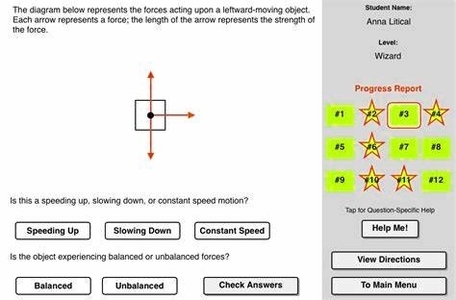
Balanced vs Unbalanced Forces
Balanced and unbalanced forces are two concepts in physics that describe the relationship between forces acting on an object and the object’s motion. A force is a push or a pull that can change the speed, direction, or shape of an object. Forces can be classified as balanced or unbalanced depending on whether they cause a change in the object’s motion or not.
Balanced forces are forces that are equal in magnitude and opposite in direction. When two or more forces act on an object and cancel each other out, they are said to be balanced. Balanced forces do not cause a change in the object’s motion; the object will either remain at rest or continue moving at a constant velocity. For example, when a book is resting on a table, the force of gravity pulling the book down is balanced by the normal force of the table pushing the book up. The net force on the book is zero, so the book does not move.
Unbalanced forces are forces that are not equal in magnitude and/or direction. When two or more forces act on an object and do not cancel each other out, they are said to be unbalanced. Unbalanced forces cause a change in the object’s motion; the object will either accelerate or decelerate. For example, when a person kicks a soccer ball, the force of the foot on the ball is greater than the force of gravity and air resistance on the ball. The net force on the ball is not zero, so the ball changes its speed and direction.
The net force on an object is the vector sum of all the forces acting on it. A vector is a quantity that has both magnitude and direction. To find the net force, we can use the following rules:
– If two forces act in the same direction, we add their magnitudes to find the net force. The direction of the net force is the same as the direction of the individual forces.
– If two forces act in opposite directions, we subtract their magnitudes to find the net force. The direction of the net force is the same as the direction of the larger force.
– If two forces act at an angle, we can use trigonometry or a graphical method to find the net force. The direction of the net force is the direction of the resultant vector.
The net force determines whether the forces are balanced or unbalanced. If the net force is zero, the forces are balanced and the object does not change its motion. If the net force is not zero, the forces are unbalanced and the object changes its motion. The net force also determines the acceleration of the object according to Newton’s second law of motion, which states that the net force on an object is equal to its mass times its acceleration. Mathematically, this can be written as $$vec{F}_{net} =
